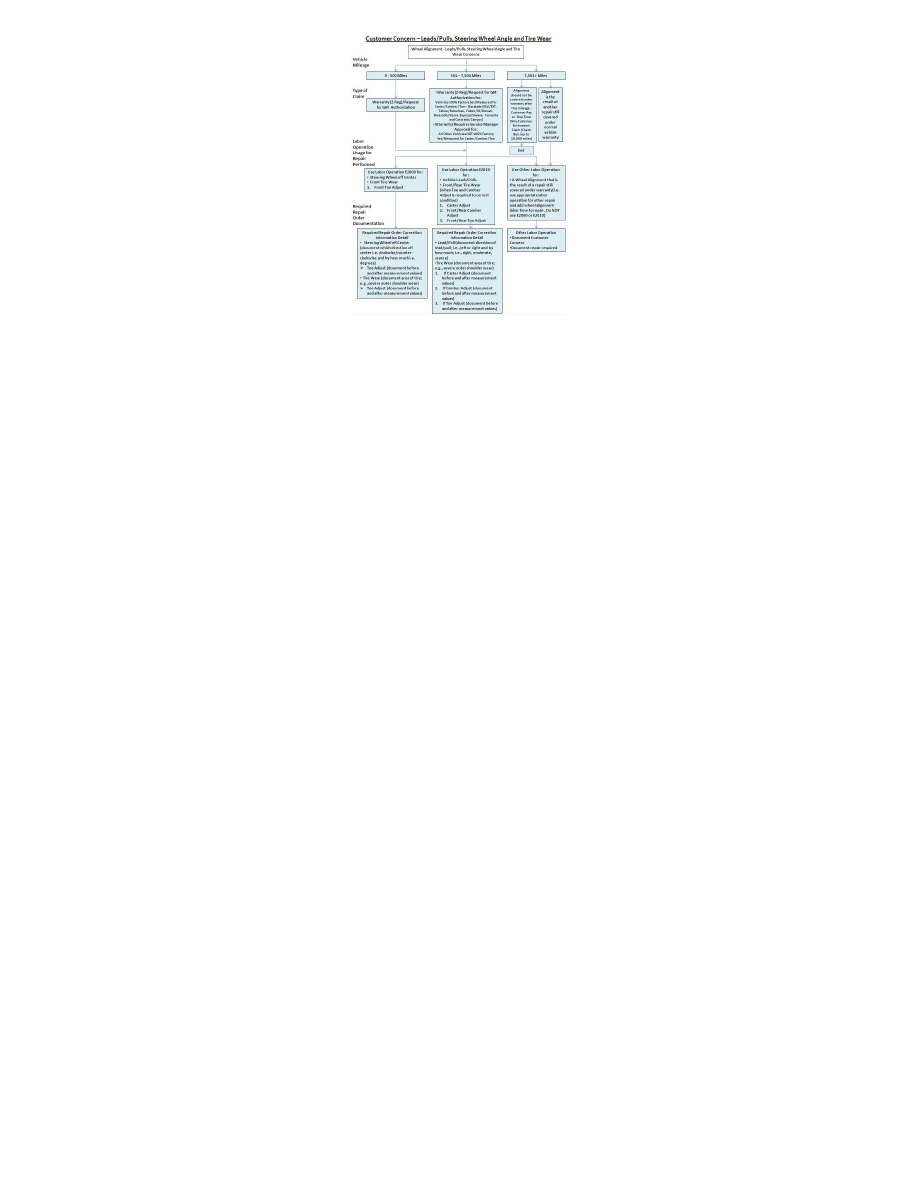C 30 1 Ton Pickup 2WD V8-454 7.4L VIN W 4-bbl (1983)

Verify Original Equipment Condition of the Vehicle
-
Verify that Original Equipment Tires and Wheels or Official GM Accessory Tires and Wheels are on the vehicle.
-
Verify that aftermarket suspension "Lift" or "Lowering" Kits or other suspension alterations have NOT been done to the vehicle.
-
Check for accidental damage to the vehicle; for example, severe pothole or curb impacts, collision damage that may have affected the wheel
alignment of the vehicle; e.g., engine cradles, suspension control arms, axles, wheels, wheel covers, tires may show evidence of damage/impact.
-
Check to be sure vehicle has seen "Normal Use" rather than abuse; e.g., very aggressive driving may show up by looking at the tires and condition
of the vehicle.
-
Check for other additional equipment items that may significantly affect vehicle mass such as large tool boxes, campers, snow plow packages
(without the snowplow RPO), etc., especially in trucks and cutaway/incomplete vehicles. Significant additional mass can affect trim height and
wheel alignment of the vehicle and may necessitate a customer pay wheel alignment when placed semi-permanently in the vehicle (Upfitter
instructions are to realign the vehicle after placement of these types of items. (This typically applies to trucks and incomplete vehicles that can be
upfit with equipment such as the above.)
Customer Concerns, "Normal Operation" Conditions and "Mileage Policy"
Possible Concerns
The following are typical conditions that may require wheel alignment warranty service:
1. Lead/Pull: defined as "at a constant highway speed on a typical straight road, the amount of effort required at the steering wheel to maintain the
vehicle's straight heading."
Important
Please evaluate for the condition with hands-on the steering wheel. Follow the "Vehicle Leads/Pulls" diagnostic tree located in SI to
determine the cause of a lead/pull concern. Lead/Pull concerns can be due to road crown or road slope, tires, wheel alignment or even in
rare circumstances a steering gear issue. Lead/pull concerns due to road crown are considered "Normal Operation" and are NOT a
warrantable condition -- the customer should be advised that this is "Normal Operation."
Important
Some customers may comment on a "Lead/Pull" when they hold the steering wheel in a level condition. If so, this is more likely a
"steering wheel angle" concern because the customer is "steering" the vehicle to obtain a "level" steering wheel.
2. Steering wheel angle to the left or right (counter-clockwise or clockwise, respectively): Defined as the steering wheel angle (clocking)
deviation from "level" while maintaining a straight heading on a typical straight road.
3. Irregular or Premature tire wear: Slight to very slight "feathering" or "edge" wear on the shoulders of tires is NOT considered unusual and
should even out with a tire rotation; if the customer is concerned about a "feathering" condition of the tires, the customer could be advised to rotate
the tires earlier than the next scheduled mileage/maintenance interval (but no later than the next interval). Be sure to understand the customer's
driving habits as this will also heavily influence the tire wear performance; tire wear from aggressive or abusive driving habits is NOT a
warrantable condition.
Important
Slight or mild feathering, cupping, edge or heel/toe wear of tire tread shoulders is "normal" and can show up very early in a tire/vehicle
service mileage; in fact, some new tires can show evidence of feathering from the factory. These issues do NOT affect the overall
performance and tread life of the tire. Dealer personnel should always check the customer's maintenance records to ensure that tire
inflation pressure is being maintained to placard and that the tires are being rotated (modified-X pattern) at the proper mileage intervals.
Wheel alignments are NOT to be performed for the types of "Normal" Tire Feathering shown in Figures 1-4 below.
